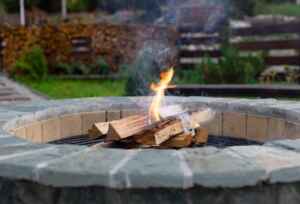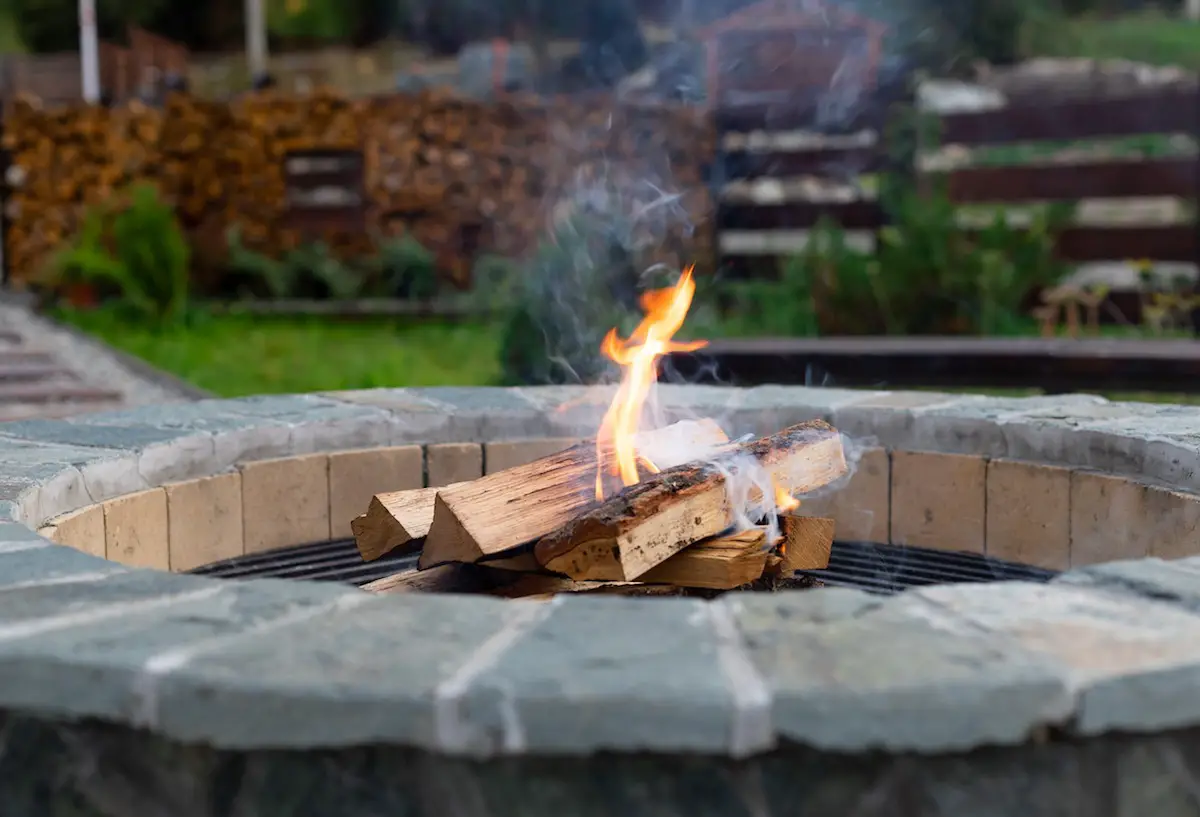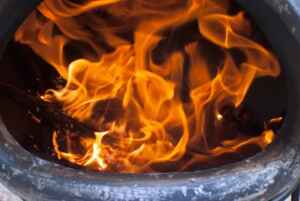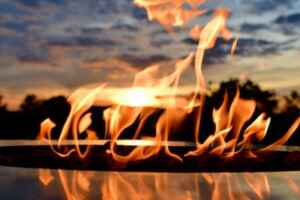Chiminea Smoke VS. Fire Pit Smoke
Smoke from a chiminea or fire pit is a common smoke that many of us have experienced, but did you know there’s a difference between the two? So, what is the difference between chiminea smoke and fire pit smoke?
There the differences between the two vary in many different ways. As chiminea smoke is much cleaner and has a minimal output due to its design. While the fire pit is better for creating an ambiance with its bigger and longer-lasting smoke output.
So, while chimineas and fire pits can both be used to create a cozy outdoor gathering spot, there are some key differences in how they work. Chimineas are typically made of clay, metal, or other heat-resistant materials and have chimneys built into the top that draws air up through a fuel source. Fire pits, on the other hand, are open-air structures made of stone or brick with no Tulsa chimney repair or draft system.
Differences Between a Chiminea and Fire Pit
When considering a fire to add warmth and ambiance to your outdoor space, you have two primary options: a chiminea or a fire pit. Both provide heat and light, but there are important differences between the two.
Not to be confused with a chiminea on the roof, chimineas are ceramic or metal fireplaces with an opening at the top for fuel. They run on wood, charcoal, or gas logs and provide good protection against sparks and embers that could cause damage or harm to people or property nearby. However, chimineas require frequent refueling because of their relatively small size compared to fire pits. Additionally, they lack drainage holes so chiminea fires must be completely extinguished after each use in order to avoid water accumulation within the chiminea chamber.
Fire pits, on the other hand, are typically larger than chimineas and can provide longer-lasting fires without frequent refueling. They also tend to be less expensive than chimineas as they can be made from various materials such as fire-resistant brick or stone, or even metal. Fire pits require a bit more maintenance due to their open design; however, they do have drainage holes that allow any built-up water to escape during rainstorms.
Overall chimineas and fire pits both offer similar benefits in terms of providing warmth and light for outdoor areas, but it’s important to weigh the pros and cons of each in order to make an informed decision. Chimineas offer more protection against sparks and embers but require more frequent refueling. Fire pits are larger and more cost-effective but require more maintenance due to their open design. Whichever you decide, chimineas and fire pits can both be great additions to any outdoor gathering space!
Chiminea Smoke and Fire Pit Smoke
The smoke produced from a chiminea and a fire pit can vary quite significantly. A chiminea on the roof is typically designed to draw smoke up and out of the structure, while a fire pit does not have this ability. As such, smoke from a chiminea tends to be much cleaner than smoke from an open fire pit.
Additionally, smoke from a fire pit will tend to hang in the air for longer, which can make it difficult to breathe and cause potential health issues. On the other hand, smoke from a chiminea dissipates quickly due to its design, meaning that it won’t linger in the air or affect your health as much as smoke from a fire pit would. Ultimately, if you’re looking for clean burning fires with minimal smoke output, a chiminea is the better option. However, if you’re looking for a smoke-filled fire that creates an ambiance, then a fire pit may be the better option.
Chiminea Smoke
Chiminea smoke is typically made up of fine particles and gasses that are released when burning wood, charcoal, or other materials inside an enclosed container such as a chiminea or fireplace. The smoke produced by a chiminea can contain higher amounts of carbon monoxide and smoke particles than other types of smoke. Chimineas are often used to provide warmth and heat in outdoor areas where open flames may not be allowed due to safety concerns.
Fire Pit Smoke
The smoke from a fire pit differs in that it usually involves burning wood, paper, leaves, twigs, and other materials directly in an open fire pit. Fire pits are often used to provide heat and ambiance in outdoor settings. Fire smoke typically contains more smoke particles than smoke from a chiminea, which is why it can be more noticeable or even smelled from a distance. Additionally, smoke produced by a fire pit may contain higher amounts of nitrogen dioxide and other air pollutants depending on the type of fuel that is burned in the fire pit.

Starting a Fire With Both Options
Starting a chiminea fire is relatively easy – all you need is a few sticks of wood, newspaper, and matches. To start your chiminea fire, simply place the wood pieces inside the chiminea along with several crumpled-up sheets of newspaper at the base. Light the paper and once the wood has caught fire, close the chimney to draw in air and keep the fire going.
Fire pits on the other hand require a bit more preparation. First, you’ll need to choose your fuel source – typically natural gas or hardwood logs. You can also use charcoal or propane instead of hardwood logs if desired. Once you’ve selected your fuel source, stack it into a pyramid shape inside the fire pit. Top off your pile with several sheets of crumpled-up newspaper and light them with a match or lighter. The fire should quickly take hold but add more fuel as needed to keep it burning steadily.
Smoke Inhalation
The smoke from chiminea and fire pits is a serious health hazard, especially in indoor spaces. Inhaling smoke can cause irritation to the lungs and eyes, as well as airway inflammation. When smoke particles feel deep into your lungs, they can even increase the risk of cancer.
Chiminea smoke is often more dangerous than smoke from an outdoor fire pit because it is not open to the outdoors. This means that smoke does not dissipate as quickly, making it more concentrated and thus more harmful when inhaled. The smoke from an outdoor fire pit will disperse much faster due to ventilation by wind or other elements, reducing the concentration of smoke in the air.
Ultimately, smoke from both types of fires can be dangerous if inhaled in large amounts over extended periods of time. If you are planning to use either type of smoke-producing device, it’s important to ensure that the smoke is dispersed away from any populated areas or enclosed spaces for safety purposes. Additionally, it’s always best to use smoke-free alternatives such as gas or electric heaters whenever possible.
By understanding the differences between chiminea smoke and fire pit smoke, you can make an informed decision when deciding which type of smoke-producing device is right for your needs. With the help of this information, you can be sure that you’re making a safe and responsible choice.
The bottom line: smoke from chimineas and fire pits can both be dangerous if not taken seriously, but by understanding the differences between the two types of smoke producers, you can choose the one that is most appropriate for your needs while keeping safety in mind.
Conclusion
Both chiminea and fire pit fires provide warmth and atmosphere for outdoor gatherings, so it’s up to you to decide which one best suits your needs. Whichever option you choose, always take the necessary safety precautions and follow all local fire codes. When using either a chiminea or fire pit, be sure to keep the smoke away from your face and body to reduce any potential health risks. Additionally, it is important to ensure that smoke produced by these sources does not enter an indoor space, as smoke can linger in enclosed areas for a long time. Thanks for reading!
Related Questions
Can you cook with a chiminea?
Yes, a chiminea is a great place to cook because it offers protection from wind and rain.
Do fire pits have to be in the ground?
No, fire pits do not have to be in the ground. While a traditional fire pit is commonly a hole dug into the ground, there are other options for constructing a fire pit that can work just as well and often offer more convenience.



